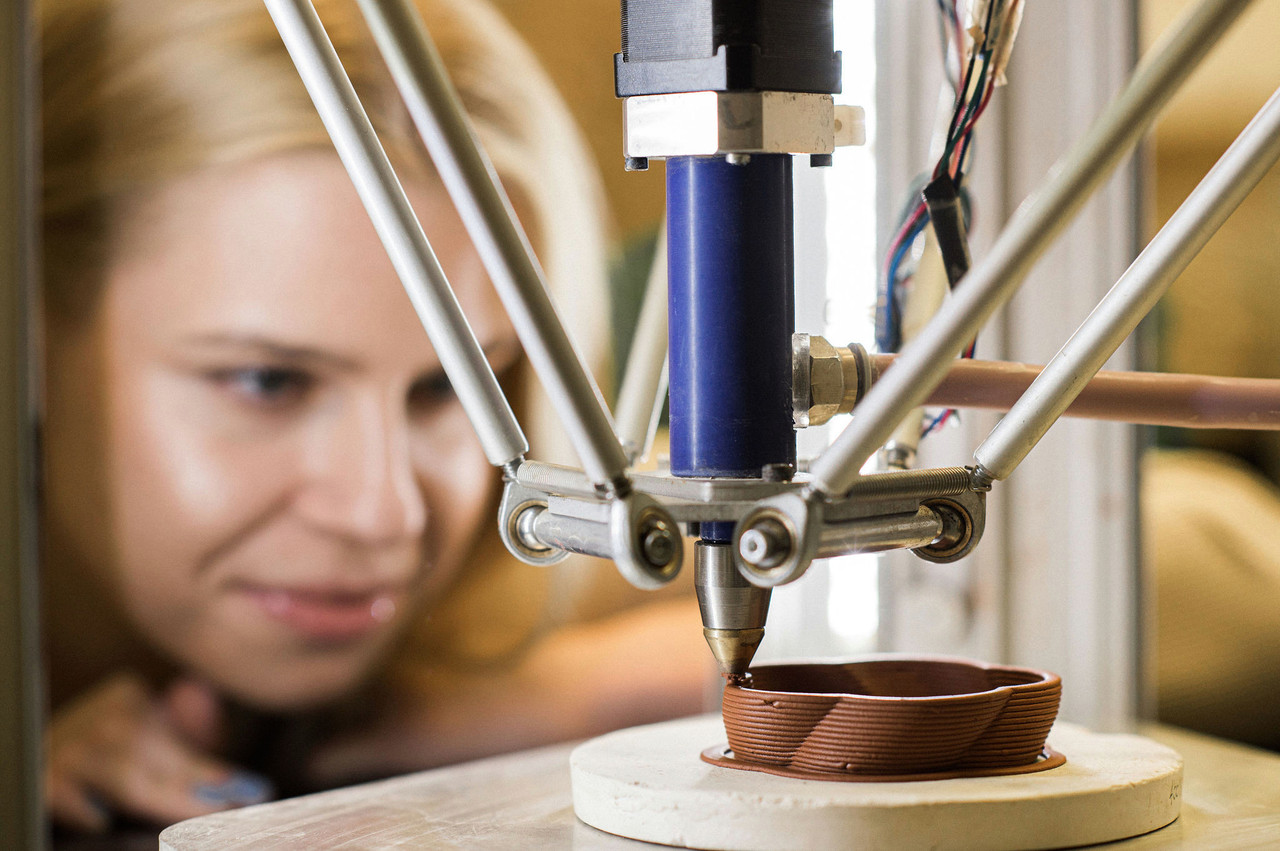Originally from Poland, Angelika Bocian-Jaworska graduated from the University of Liechtenstein’s architecture programme with a focus on sustainable construction, and went on to complete a postgraduate degree in the 3D printing of clay architecture.
“I am an architect who questions the current approach to architecture,” she says, “especially in the face of the housing and ecological crisis. I believe that materials with a low environmental impact combined with emerging technologies could be a solution.”
This, she says, is why she created Äerd Lab and began experimenting with 3D-printing Äerd—which is to say, earth.
The startup has now made the transition from pop-up to permanent shop, with a fixed workshop/store in Pfaffenthal that will officially open on 21 May. Previously, it could be found in temporary locations on the Grand-Rue and the Rue des Capucins. Bocian-Jaworska says that, in the new location, she can start scaling up her printing activities.
Ecological materials
Äerd Lab’s ultimate mission is to 3D-print houses out of earth. The startup began by printing ceramics (mugs, bowls, vases, etc.), but is now working towards what Bocian-Jaworska calls “earthen architecture”.
“Everyone claims that architecture should change direction and adopt more sustainable measures,” she comments, “but a noticeable paradigm shift is missing.” She argues for a new norm that combines old experiences with new techniques, namely 3D-printing. The idea is to stop using concrete and start (again) using earth, since it is a more sustainable and affordable building material.
3D-printing brings several advantages, she adds: by simultaneously combining organic design, new typologies and customisation, it saves time and materials in the construction process.
“Imagine living in a house which was built on your site and out of local soil. The walls are self-ventilating and the quality of the air and space is much more human-friendly than generic concrete interiors.”
3D-printing the future
Most people associate 3D printers with resin or polylactic acid, a type of biodegradable plastic, but Bocian-Jaworska points out that the possibilities hardly stop there.
“Have you tried 3D-printed chocolate or Nutella pralines? I also saw a teapot printed out of actual tea. Referring again to houses, there are already ones that have been 3D-printed using salt, sand or wood. As you can see, concrete is passé!”
